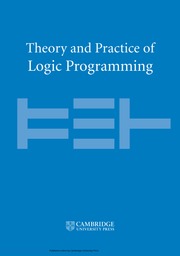Article contents
Building Information Modeling Using Constraint Logic Programming
Published online by Cambridge University Press: 14 July 2022
Abstract
Building Information Modeling (BIM) produces three-dimensional object-oriented models of buildings combining the geometrical information with a wide range of properties about materials, products, safety, to name just a few. BIM is slowly but inevitably revolutionizing the architecture, engineering, and construction industry. Buildings need to be compliant with regulations about stability, safety, and environmental impact. Manual compliance checking is tedious and error-prone, and amending flaws discovered only at construction time causes huge additional costs and delays. Several tools can check BIM models for conformance with rules/guidelines. For example, Singapore’s CORENET e-Submission System checks fire safety. But since the current BIM exchange format only contains basic information about building objects, a separate, ad-hoc model pre-processing is required to determine, for example, evacuation routes. Moreover, they face difficulties in adapting existing built-in rules and/or adding new ones (to cater for building regulations, that can vary not only among countries but also among parts of the same city), if at all possible. We propose the use of logic-based executable formalisms (CLP and Constraint ASP) to couple BIM models with advanced knowledge representation and reasoning capabilities. Previous experience shows that such formalisms can be used to uniformly capture and reason with knowledge (including ambiguity) in a large variety of domains. Additionally, incorporating checking within design tools makes it possible to ensure that models are rule-compliant at every step. This also prevents erroneous designs from having to be (partially) redone, which is also costly and burdensome. To validate our proposal, we implemented a preliminary reasoner under CLP(Q/R) and ASP with constraints and evaluated it with several BIM models.
Information
- Type
- Original Article
- Information
- Theory and Practice of Logic Programming , Volume 22 , Issue 5: 38th International Conference on Logic Programming Special Issue II , September 2022 , pp. 723 - 738
- Copyright
- © The Author(s), 2022. Published by Cambridge University Press
Footnotes
We would like to thank Vishal Singh, and Mehmet Yalcinkaya, from VisuaLynk, and especially Olli Seppänen, who hosted J. Arias at Aalto University in the summer of 2019, for useful discussions in the early stages of the work we present in this paper. Work partially supported by EIT Digital, EU H2020 project BIM4EEB (Grant 820660), MICINN projects RTI2018-095390-B-C33 InEDGEMobility (MCIU/AEI/FEDER, UE), PID2019-108528RB-C21 ProCode, Comunidad de Madrid project S2018/TCS-4339 BLOQUES-CM co-funded by EIE Funds of the European Union, US NSF (Grants IIS 1718945, IIS 1910131, IIP 1916206), DoD, and Amazon.
References
- 8
- Cited by


